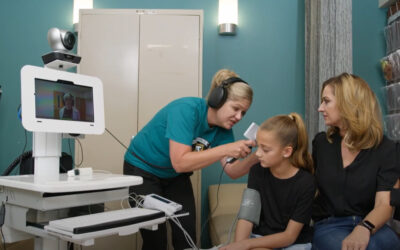Over the past decade, telehealth has become increasingly more popular as a means to provide care to patients. In fact, the American Hospital Association estimated that more than 75% of U.S. hospitals were using telecommunication technologies to connect with patients in 2017.
However, recent events have made the adoption of telehealth services across healthcare practices even more of a priority. This year alone, the demand for telehealth is expected to reach by over 64% compared to last year, according to Imaging Technology News.
With this sudden need for telehealth, many healthcare organizations are quickly trying to onboard telemedicine and telehealth technology and train staff on new workflows. Telehealth is only as effective as the team utilizing it, so it’s of the utmost importance to ensure healthcare staff know the ins-and-outs of the system in place.
Here are a few things you can do to train and support your team while onboarding telehealth to ensure you’re creating a sustainable care plan for patients:
1. Make training mandatory for your staff
During the onboarding process, your telehealth vendor will be your biggest ally in getting your staff trained properly. After all, they want your organization to succeed with their system in place. A solution vendor will typically provide you with initial training with their program, and it’s important that every user is required to attend and receive the same cohesive instructions. They may also help you identify key training areas so you can continue with refresh training in the future.
If some of your staff is unavailable for initial sessions, see if your vendor offers additional virtual sessions that can be scheduled at a later time, so no one gets left behind.
2. Simulate real encounters for practice
While onboarding telehealth, best practice is to continuously run different scenarios to test your equipment capabilities, remote physician connectivity and comfort with the adjusted workflow. The National Coordinator for Health Information Technology emphasized this in their first Telehealth: Start-up and Resource Guide. Having staff complete a mock run of daily routines and unexpected occurrences with the telehealth system builds confidence and helps your team become familiar with their technology and equipment.
This is also an opportunity to teach some basic troubleshooting skills to staff, which is key to creating a sustainable telehealth program. Simulated telehealth encounters will help ensure the technology serves as an extension of your patient care delivery model.
3. Communicate with staff frequently
Deploying a telehealth solution doesn’t end after running an initial training session. You should make it a habit to continue to check in with your staff frequently to make sure they are utilizing their technology appropriately. This serves as a moment to connect with your staff, answer any lingering questions and further identify any areas that still need improvement. Remember, you can always reach out to your telehealth solution vendor for continued support and additional training if needed. Sometimes a refresher course is needed once you have been practicing the workflow for a short period of time.
It may be best to designate a task force or sole party to handle internal telehealth communication and handle questions from staff. Then, create a schedule of follow-up training to show your organization is committed to transformation with telehealth.
 Ensure everyone is trained on how telehealth benefits the patient.
Ensure everyone is trained on how telehealth benefits the patient.
4. Measure their success
Finally, it’s important to create measurements for your staff so they can understand where they are succeeding and what they need to improve during the onboarding process. Becker’s Hospital Review recommends first defining success, establishing short- and long-term goals and setting metrics to track your team’s progress. This could involve factors such as productivity or clinical outcomes.
These hard metrics are essential for improving training and the telehealth program overall, but don’t forget to check in to ensure staff and patients are satisfied with the solution. Over time, these metrics may change and include new goals as your organization and telehealth capabilities grow.
AMD Global Telemedicine has 29 years of experience onboarding telehealth at healthcare organizations around the world. We have learned through the years, that the telemedicine solution has to integrate seamlessly into your existing workflow and provide an experience as close to “in-person” as possible. We understand that training staff on new solutions can be difficult, so we are dedicated to supporting your staff to ensure they will be confident in navigating the system. For more information on our telemedicine products, contact us today.





